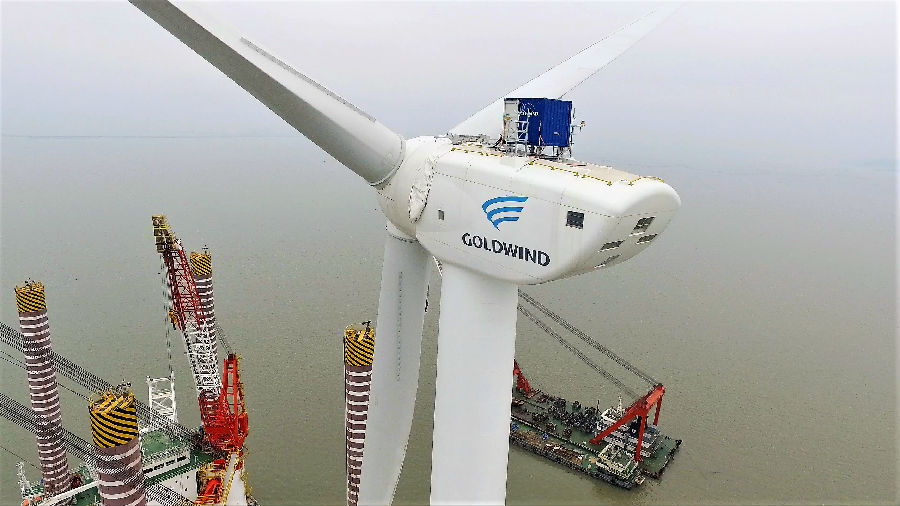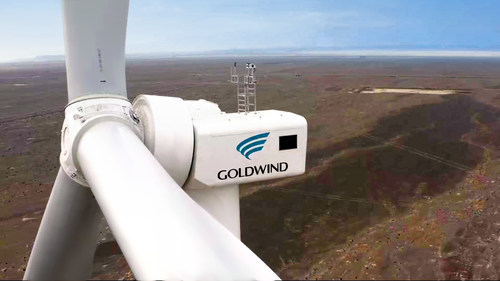China leads in wind power while Europe lags behind. China is emerging as a dominant player in global wind power generation, with manufacturers in the country supplying nearly 60% of installed wind turbines worldwide in 2022.
The figures, compiled by the Brussels-based Global Wind Energy Council, indicate that China claims a dominant share of the wind power and solar panel markets.
China’s Goldwind, the leader in the domestic market, ranked second in the global market with a 13% share, behind Denmark’s Vestas with 14%.
Of the world’s top 15 companies, 10 were Chinese, including fifth-place Envision with a 9% share and sixth-place Mingyang Smart Energy with 7%. In total, China accounts for 56% of the installed capacity with wind turbines, more than any other country. Its participation has skyrocketed from the 37% it had in 2018.
Spain’s Siemens Gamesa Renewable Energy came in third with 10%, falling from 12% in 2018. The overall share of European companies fell from 55% in 2018 to 42% in 2022, having been overtaken by China in 2020.
The Chinese government has taken an active role in developing the country’s offshore wind power generation industry, not only to address power shortages and air pollution, but also to make renewable energy a foundation for growth. economic.
The sector’s expansion was spurred by a 2019 government notice that urged power providers to connect their facilities to the power grid by the end of 2021 to take advantage of a generous purchase price offered under the government’s FIT program.
As a result, China’s cumulative offshore wind power capacity grew to about 31 gigawatts in 2022, surpassing Europe for the first time to take the world number one spot. New installed capacity in China in the same year was about 5 gigawatts, more than twice that of Europe.

China’s Goldwind was the country’s top wind power company in 2022 by installed capacity, ranking second in the global market with a 13% share.
Since then, Chinese manufacturers have improved their cost competitiveness by scaling up and expanding sales channels in Europe and Japan. Wind turbines manufactured by Mingyang Smart Energy were installed in offshore wind farms in Italy in 2022 and in Japan’s Toyama Prefecture in June this year.
Europe took the lead in wind power starting in the 2010s, but development has slowed due to high costs stemming from rising interest rates and inflation. Siemens Gamesa Renewable Energy ran into financial difficulties and became a wholly owned subsidiary of Germany’s Siemens Energy.
And in the US, General Electric posted a $773 million loss on its renewable energy business during the first half of this year.
Chinese manufacturers could further increase their market share by leveraging their cost competitiveness, making it “difficult for developers and lawmakers to turn away Chinese suppliers,” British research firm Wood Mackenzie said in a report.
But the increasing reliance on Chinese manufacturers could increase supply risks amid rising US-China tensions.
The United States has set an ambitious goal of increasing its offshore wind power generation capacity to 110,000 megawatts by 2050, up from tens of megawatts today. The target for 2050 would be equivalent to the capacity of 110 nuclear reactors.
The United States, which already restricts imports of Chinese solar panels with tariffs, could take a similar step toward Chinese wind turbines.
Meanwhile, Japan has not been successful in developing a domestic market, with Mitsubishi Heavy Industries and Hitachi pulling out of wind turbine manufacturing after losing out on rivals abroad.
The Japanese government is now stepping up efforts to encourage domestic operators, with the goal of installing 30,000 to 45,000 megawatts of offshore wind power by 2040.
Toshiba will partner with GE to launch a nacelle assembly plant, the core assembly of a wind turbine that includes the generator and other components, in 2026, sourcing parts from domestic companies.


